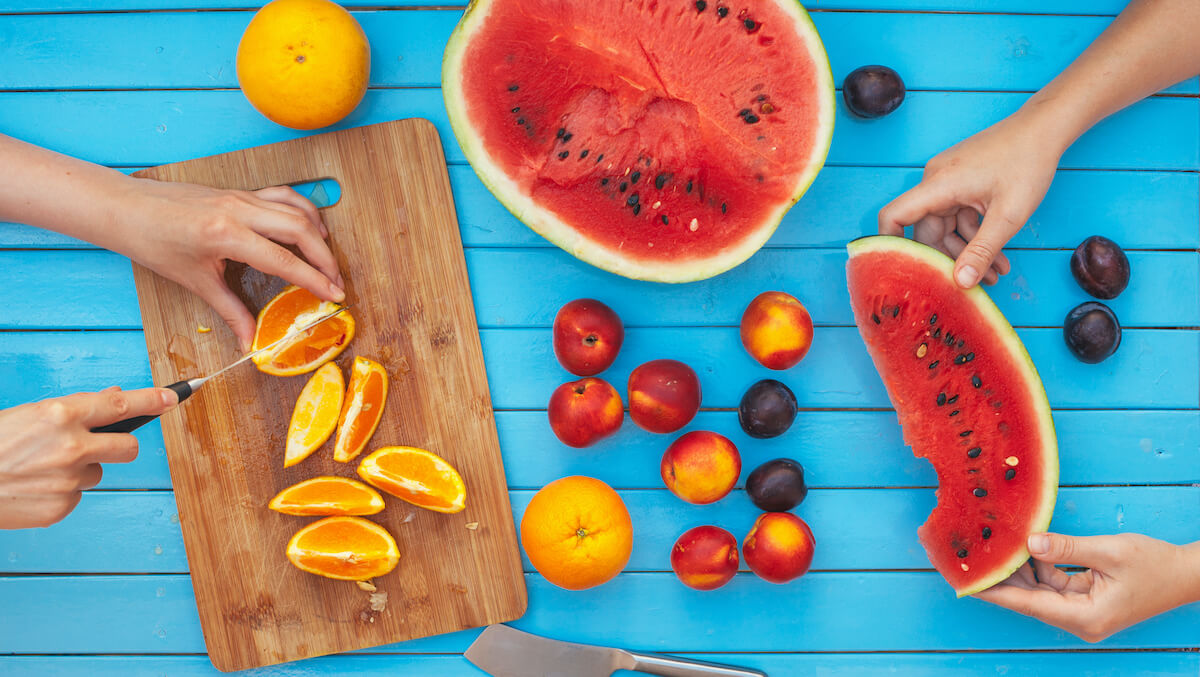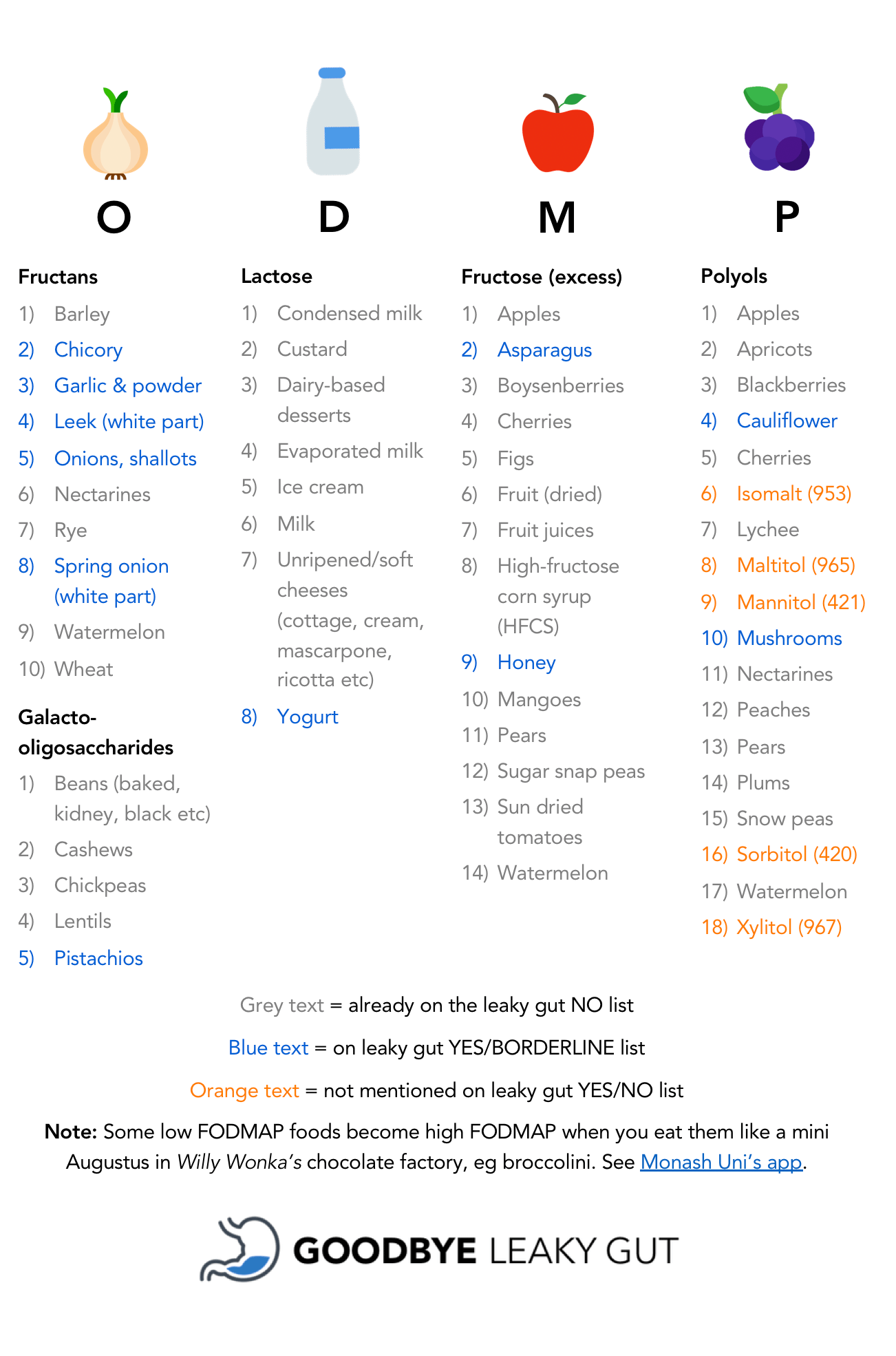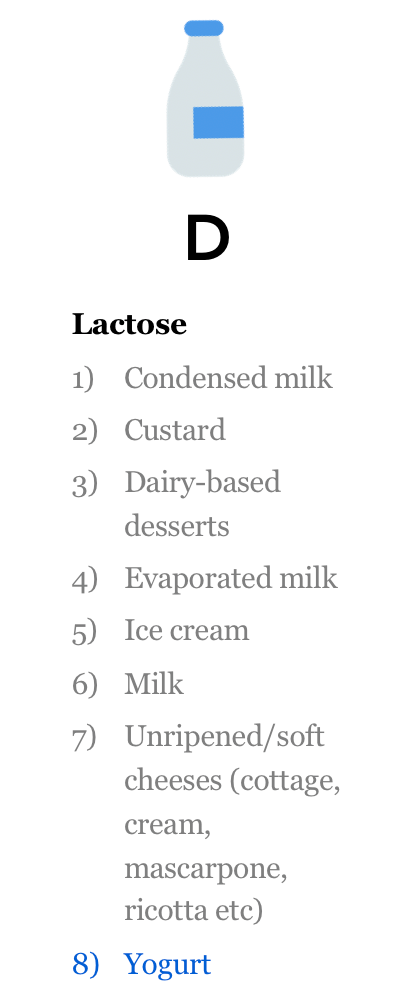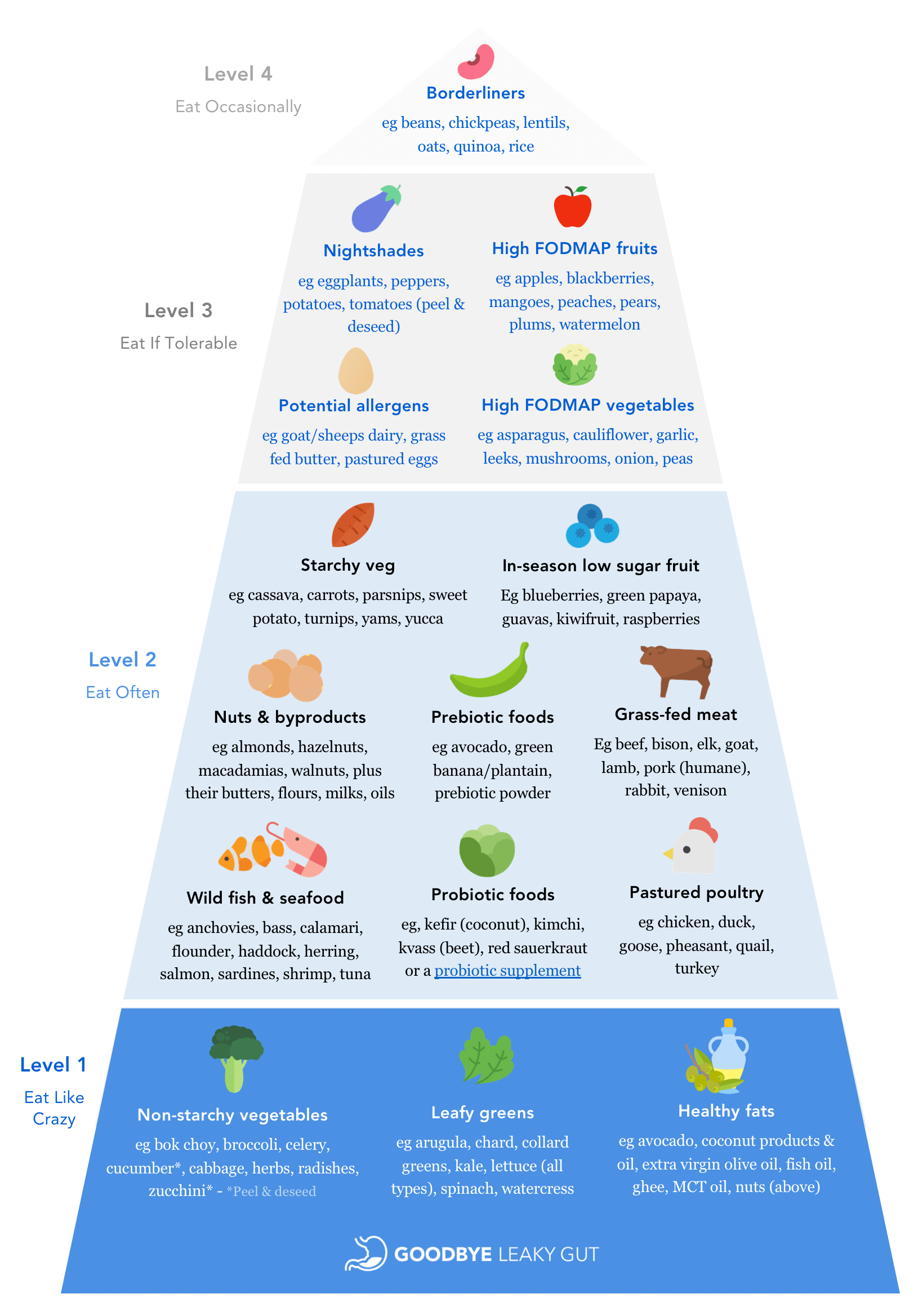What the heck are FODMAP foods and could they really be contributing to your leaky gut health issues, like bloating, reflux and weird bowel movements? Well, that’s exactly what we’re going to look at in this ultimate guide to FODMAPs!
Last Updated: Oct 17, 2023

In this guide, you’ll discover…
There is a special group of foods out there. Many of them appear harmless, maybe even healthy at first glance.
But they can cause serious digestive health issues for a lot of us. (Think uncontrollable urge to use a bathroom whilst you’re stuck in a 4 mile traffic jam!).
And so you’re probably wondering…
“Richard, you’ve been holding back this goodness, why you do me like that?”
Well, that’s because I’ve tried to keep my leaky gut protocol as simple as possible for you. Since after speaking to 1000s of you, the #1 determinant of success is a protocol that is easy to follow and thus actually gets done.
But I finally realized not talking about this special group of foods is kind of crazy.
After all, eliminating them has helped 100,000s of people with serious gut problems feel better within just weeks. Including my Aunt and cousin last year! (Seeing their lives change melted my little heart)
Plus, this special group of foods was identified by one of the best dietary-focused research universities in the world, Monash University. And best of all, for those of us on a leaky gut diet, it is a fairly easy dietary change to make.
So what exactly are we talking about?
FODMAPs of course – or as I like to call them ‘The Four Horsemen of Your Colon’!
I know this is turning dark real quick. But, that’s because the acronym FODMAPs refers to a group of 4 types of carbohydrate foods, which can cause serious issues for our gut, as I’ll explain below.
Before you start worrying that you’ll have to eliminate the rest of the foods left in your house (!), let me just say that most of the FODMAP foods have already been eliminated as part of the standard leaky gut diet.
And so there are just a few that remain.
Those being some seemingly healthy foods like cauliflower and garlic, which although overall gut-friendly, do have high FODMAP counts and thus may be THE reason why you’re still not feeling good.
This list is fairly exhaustive. There are a few foods missing that can be categorized as high FODMAP when eaten in large amounts, eg broccolini, but I’m going to assume you’re not going all Popeye on a bush of broccolini!
As you’ll see in the image below, I’ve also written some notes about which foods to watch out for in particular, and which ones should already be eliminated thanks to eating a leaky gut diet.

The first letter in the name, F, explains why these four horsemen can be so bad for us.
You see, the F stands for fermentable. And that’s the thing…
…high FODMAP foods are short-chain carbohydrates (sugars) that are poorly absorbed in the small intestine, which leads to them being rapidly fermented by the bacteria in the large intestine/colon.
Due to this ‘double whammy’ FODMAP foods can cause excess water and over fermentation in the colon. Which of course can lead to bloating, gas, constipation, diarrhea and bacteria overgrowth.
Aka my last trip to an onion-filled and queso-rich Mexico City!
Those of us with leaky gut, are thus particularly sensitive to FODMAPs since our small intestine is not doing a good job at absorbing/digesting in general, let alone with these harder to digest foods.
Plus, many of us with leaky gut also have IBS. Which is not surprising given leaky gut is one of the 6 leading causes of IBS – or at least the symptoms associated with the IBS, per Monash University.
And for people with IBS (myself included), Monash University has shown a 75% success rate in symptom reduction following implementation of a low FODMAPdiet!!!
See how FODMAPs could be the missing ingredient for your glorious gut this year?!
Finally, the letters that follow from F, being O, D, M and P, represent the four horsemen…I mean the four high FODMAP food categories. Whilst the A simply stands for ‘and’.
(Yeah, they really needed that to make this acronym catchy!)
It’s worth noting, you’ll see the word ‘saccharides’ trotted out a few times below. And so before you start saying, ‘woah, woah, slow down egg head’, I’m happy to tell you it just means sugar.
1) O = Oligosaccharides
 Okay, so you’ve got 2 types of these bad boys.
Okay, so you’ve got 2 types of these bad boys.
The first type of oligosaccharides are fructans. Which are chains of fructose / fruit sugar molecules.
You’ll find fructans in foods you’ve already eliminated, like wheat, but also in foods you’re probably still eating, like garlic and onion.
And trust me when I say this…eliminating those last remaining fructans from your diet can be a total game changer – especially in terms of bloating and gas.
The second type of oligosaccharides are galacto-oligosaccharides. Which are chains of galactose sugar molecules.
You’ll find this alien-sounding sugar in foods like beans (eg kidney, baked, black beans etc), cashews, lentils etc.
These sugars are literally THE reason as kids we used to eat baked beans for breakfast and then sing…
“Beans, beans, the magical fruit. The more you eat, the more you toot!”.
i.e. galacto-oligosaccharides are the kings of flatulence!
Thankfully we now have the enzyme alpha-galactosidase, which can help digest these sugars and make life a little less embarrassing. Which is why we put it in these digestive enzymes.
(Oh and hey, anything we can do so a few less puppies get blamed for our flatulence, the better!).
So to summarize oligosaccharides are…
- Fructans – chains of fructose / fruit sugar molecules. Eliminating them can be a game changer (they were for me). Found in garlic, onion, wheat etc.
- Galacto-oligosaccharides (GOS) – chains of galactose sugar molecules. Flatulence kings! Found in chickpeas, beans, lentils etc.
2) D = Disaccharides
 The ‘di’ in the name hints at the fact this is a 2 sugar molecule.
The ‘di’ in the name hints at the fact this is a 2 sugar molecule.
The main fermentable disaccharide we’re concered with is lactose – a combination of glucose and galactose sugars.
And we all know where we find this Hannibal Lecter of the disaccharide world…dairy products!
You can reduce the impact of lactose by consuming lactase enzymes. And you’ll find them in good enzyme supplements, like this one.
So to summarize disaccharides are…
- Lactose – this is a 2-sugar molecule (disaccharide), combining glucose and galactose, that is fermentable and often troublesome. It is found in dairy products and is simply the Hannibal Lecter of the disaccharides world.
3) M = Monosaccharides
 The ‘mono’ in the name hints at this being a 1 sugar molecule.
The ‘mono’ in the name hints at this being a 1 sugar molecule.
(Aren’t you enjoying going back to chemistry classes with me)
The focus in this category is possibly the baddest of FODMAP bad boys…
…fructose!
I know for me personally, this is a true gut irritant. And one that can be hard to avoid given how delicious fruit can be and how many places fructose can sneak into.
The thing about fructose though, is that it isn’t always bad.
In fact, when it’s paired with glucose, it can be escorted somewhat okay through our GI tract.
But when allowed to roam free by itself and in high amounts, it can cause carnage.
That’s why I think of fructose like the dragons in Game of Thrones.
i.e. when they’re hanging out with their mama, Daenerys (aka Glucose Queen), they’re well behaved-ish and don’t cause too much trouble. But when alone, ay carumba, prepare for fire & destruction!
So the main thing to watch out for are foods that are excessively high in fructose (relative to glucose).
So to summarize monosaccharides are…
- Fructose (excess) – this is a 1-sugar molecule (monosaccharide) to watch for when in high amounts relative to glucose. You see, fructose is kinda like the dragons in Game of Thrones. When accompanied by their Mama Daenerys (glucose) they don’t cause a lot of trouble. But when they’re alone, they can tear the place (your GI tract) apart. Found in fruits & veg.
4) P = Polyols
 Polyols are sugar alcohols. i.e. sugar molecules with an alcohol side-chain.
Polyols are sugar alcohols. i.e. sugar molecules with an alcohol side-chain.
The big ones to worry about in terms of having a highFODMAP count are maltitol, mannitol, sorbitol and xylitol. You’ll find them naturally in many fruit and veg.
But they also show up hidden in packaged foods, especially sugar-free foods, eg gum and mints (which can pack a whopping amount of them!).
They can be quite hard to spot as they’re often labelled as a number, instead of their name. Which is why I’ve also included their numbers in the list to your right.
So to summarize polyols are…
- Sugar alcohols – the high FODMAP ones include maltitol, mannitol, sorbitol and xylitol. They can be found naturally in certain fruits & veg, but also show up a lot in ‘sugar-free’ foods, eg gums, mints etc.
Here are some smart ways to enjoy high FODMAP foods without feeling like a GI-challenged Michelin Man.
1) Small serves
With FODMAPs the dose really does make the ‘poison’. And many of them can be eaten during the elimination phase in small serves. For example, there is a huge difference between a few thin slices of pear topped on a salad (~3g fructose w glucose) vs eating an entire pear by itself (~16g fructose).
That’s why you’ll see the research team at Monash University, who created the diet, actually include small amounts of FODMAP foods in some of their recipes.
2) Preparation & cooking tricks
My 2 favorite tricks are 1) extend the fermentation period of normally high FODMAP foods, eg yogurt and kefir can become quite low in FODMAPs after enough fermentation, and 2) heat oils and flavor with fructans like garlic and onion, and then remove the pieces before continuing cooking.
3) Alpha-galactosidase enzymes
A 2017 Monash University study showed these enzymes can help people better tolerate galacto-oligosaccharide containing foods, eg beans, chickpeas, lentils etc. So if you’re out of the strict leaky gut diet phase, then hopefully armed with these you can start tucking into some tasty hummus (made from chickpeas) without later blaming ye olde flatulence on your poor puppy!
You can find alpha-galactosidase in this enzyme supplement.
4) Lactase enzymes
These digestive troopers can help break down lactose sugars, which can support less bloating, gas and diarrhea. For example, lactose-free milk is simply normal milk that has had lactase enzymes added to it. Hoorah for science!
You can find lactase enzymes in the same enzyme supplement.
Since we’ve seen just how much digestive distress high FODMAP foods can cause, shouldn’t we just switch to a low FODMAP diet?
Nein! Nyet! No! Here’s why…
If you start Googling around for low FODMAP diets, you’ll probably fall out of your chair as you find many of our leaky gut foes on the YES list of these diets!
From canola oil to cheddar cheese to sugar-filled pineapple, these low FODMAP diets just lump them all on the okay list!
Heck, even table sugar (sucrose) is on the okay list since it combines fructose and glucose in even amounts, and is thus not a FODMAP problem. Crazy!
I mean, sure, these foods are not high in FODMAPs. But heck, they sure are high in other gut irritants like gluten, sugar, lectins and whatnot.
It is quite funny how people can have their world view so narrowed. i.e. high FODMAP = bad, and everything else = good.
So instead of following a low FODMAP diet, what we want to do is simply filter our leaky gut diet against the high FODMAP foods.
Which is exactly what I’ve done for you in the list above.
All you need to do is look at the leaky gut food pyramid below, and keep the high FODMAP foods in mind.

Unfortunately, there is one major problem with a low FODMAP diet
The problem with eating a low FODMAP diet (and thus avoiding high FODMAP foods) is that it can make it so hard to get enough fiber in our diets, especially prebiotic fiber, which feeds our good bacteria.
This is a huge issue! And it is why many medical experts are wary of recommending a low FODMAP diet. And since it is so important, we’ll dig into it now and see what solutions exist for us.
So why does prebiotic fiber actually matter?
Well, here’s the thing – your good bacteria, also known as probiotics, have a slightly different appetite to you & me. Instead of hungering after some nice BBQ for example, they prefer to eat prebiotics. In other words, prebiotics are the fuel they need to grow strong.
And when our good bacteria is strong they can help us digest food better, support mood, improve immune system function, fend off bad bacteria, and of course, help with bowel movements and intestinal wall strength.
Pretty cool, right!
But most prebiotic-rich foods are high FODMAP
Unfortunately, it turns out that most foods high in prebiotics are also high in FODMAPs, eg garlic, onion, leeks, asparagus etc. And as we saw above, FODMAPs can be particularly irritating for those of us experiencing digestive issues such as leaky gut and IBS.
In particular, they can cause rapid and excess fermentation, as well as water retention in the large intestine, leading to gas, bloating and even diarrhea.
Are there any prebiotic-rich foods low in FODMAPs?
Well, the answer is yes, but the list is quite limited.
My favorites for example are kiwifruit and green banana. But realistically, it is hard to get enough prebiotics from this selection. And this is why I think a prebiotic supplement can make sense.
The problem with most prebiotic supplements
Sadly the vast majority of the ones on the market today suffer from the same problem as most prebiotic-rich foods.
Yes, you guessed it – most of these also have large quantities of high FODMAP ingredients (eg chicory root, corn fiber etc) and so they can also potentially lead to an upset digestive system.
Finally, a low FODMAP prebiotic fiber supplement
Together with my research team we decided to solve this problem once and for all!
We dove deep into the world of prebiotics to find the best fibers – the type that could gently feed your gut bacteria, but without potentially causing gas, bloating and general digestive distress due to FODMAP sensitivities.
And so it’s my great pleasure to introduce to you this prebiotic powder.
It’s a unique blend of 2 world class prebiotics, being Organic Acacia Fiber and Organic Guar Gum. Both are low FODMAP, plant based and have dozens of supportive studies behind them.
Best of all, these Prebiotics are 3rd party verified gluten, dairy and soy free!
Work through these steps with a registered dietitian and start kicking some FODMAP buttocks!
1) Keep saying NO to our leaky gut foes
Many of the naughtiest high FODMAP foods are already out of the leaky gut diet. I’ve colored them grey on the NO List at the top of this page. So just double check your current diet and make sure you’re still saying no to these bad boys.
2) Start saying NO to the rest
These are all the foods colored blue or orange on the NO List above. Some will probably surprise. Eg garlic and cauliflower are healthy foods normally, but they do have significant FODMAP counts. But the big one to watch out for is Polyols (sugar alcohols), since they sneak into a lot of sugar-free items.
3) Hold the line for 1 month
Stay on a low FODMAP diet for the next 1 month. I know it seems like a while, but it will fly by. And it’s not that hard, as there are only a few new types of food you’re excluding. And hey, they could be your hidden triggers!
4) Reintroduce them one-by-one
Once your FODMAP elimination diet has ended, start reintroducing one FODMAP food group at a time and in small amounts, eg 1 clove of garlic, not a whole bulb. I personally focus on one new food group each week, eg fructans, as that gives enough time to see if there are any delayed symptoms.
Bring the foods that don’t cause a reaction back into your normal diet and ditch the ones that still don’t play well.
5) Use my FODMAP hacks
FODMAP foods can be quite tolerable in small amounts – even during the ‘hold the line’ elimination period. E.g. 1 gram of a sugar alcohol in your kombucha is unlikely to cause major problems.
Whilst they can also be mitigated by cooking techniques and certain enzymes like lactase and alpha-galactosidase (both found in this enzyme supplement).
6) Enjoy gentle fiber with a low FODMAP prebiotic
To help keep things ‘moving’ and also feed your good bacteria & protect your intestinal wall, try a low FODMAP prebiotic supplement like this one.
You are officially a FODMAP Fighting Superhero!
Hopefully you can see this is not a complicated change to the leaky gut protocol.
After all, the majority of high FODMAP foods are already on our leaky gut diet ‘NO list’. So only a few NEW (but important) foods need to be eliminated. e.g. garlic, onion, yogurt, asparagus, cauliflower, honey, mushrooms etc.
Just remember to also be vigilant with sugar alcohols, as they are loaded into many packaged foods out there, especially ‘sugar free’ foods.
As with everything, please work with a registered dietitian or nutritionist to get the best results for you.
